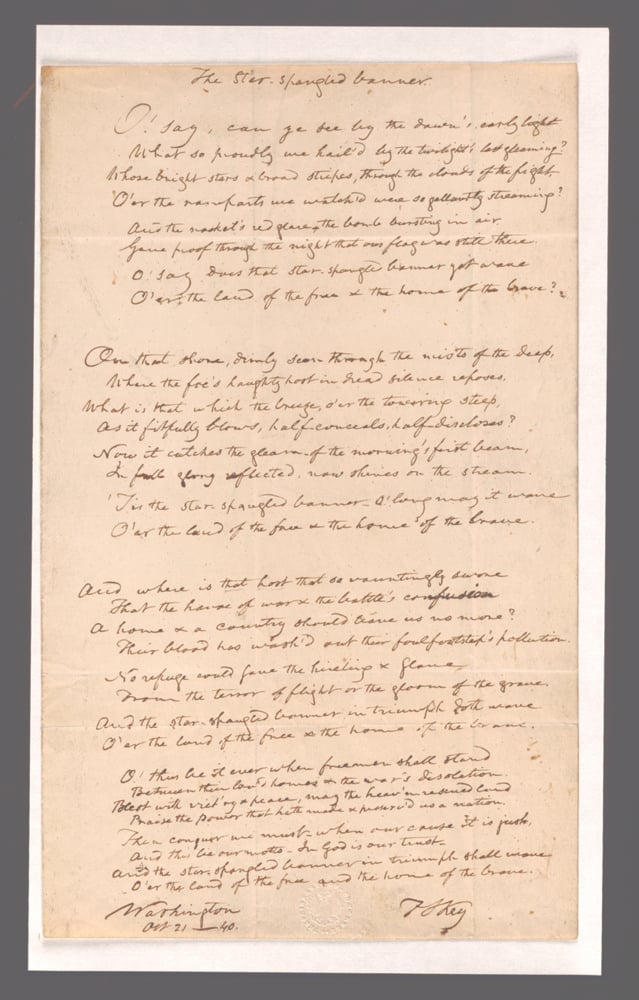
Instead, letters in Key’s day were written on a sheet of paper that was folded and sealed with wax. While the original working draft of Key’s lyric is lost, envelopes were not commonly used in 1814 and then only by the rich for special occasions. Myth #2: Francis Scott Key drafted “The Star-Spangled Banner” on the back of an envelope (or letter).Ĭorrection: Key most likely wrote his draft on a clean sheet of paper using pen and ink. And what does a patriotic poet do when stuck with nothing to do and having witnessed a momentous event? He wrote the lyrics of a song to a well-known melody that he knew well. He spent the next two days waiting for the British to depart, when they would release him and his compatriots. He was elated and relieved, certain that God had intervened. Yet Key rose on the morning of Septemand through the lens of his spyglass saw his nation’s 15-star, 15-stripe flag waving defiantly over the fort. Superior British weapons pounded the fort from newly designed bomb ships anchored safely out of range of the fort’s own guns. Key was likely some six to eight miles from America’s Fort McHenry, which guarded against certain American defeat by protecting the entrance to Baltimore’s harbor. (The exact name of this ship has defied generations of researchers.) During the harrowing 25-hour bombardment, their ship was tethered to a British vessel (one not involved in the fighting) and placed under guard in order to prevent Key and his companions from revealing to Baltimore’s defenders any attack plans overheard.

Surprise and finally back to their own American truce ship. Tonnant, where they had negotiated with British Admiral Cochrane, to the H.M.S. Key’s mission was a success.ĭuring their talks, and then upon the release of the doctor, Key and Beanes were moved from the H.M.S. His father served in the Continental Army his uncle remained a British loyalist during the Revolution. Key was a persuasive addition to the negotiating team because of his close family ties to both the United States and England. burning of York (current day Toronto) in April 1813. William Beanes, a civilian non-combatant who had been taken prisoner by the British as they departed Washington, DC after burning the White House, the Capitol, and other government buildings in revenge for the U.S. They were on a mission of mercy to negotiate the release of the elderly Dr. Agent for Prisoners of War, sailed from Baltimore on Septemon an American truce ship and headed down the Patapsco River hoping to meet the British fleet somewhere in the Chesapeake Bay. Myth #1: Francis Scott Key was held prisoner aboard a British ship during the bombardment of Baltimore.Ĭorrection: Key was aboard his own American truce ship during the battle. Francis Scott Key (credit: Wikimedia Commons)

On September 14, 1814, the Battle of Fort McHenry inspired Francis Scott Key to write "The Star-Spangled Banner." The University of Michigan's Mark Clague corrects some common myths about our national anthem.


 0 kommentar(er)
0 kommentar(er)
